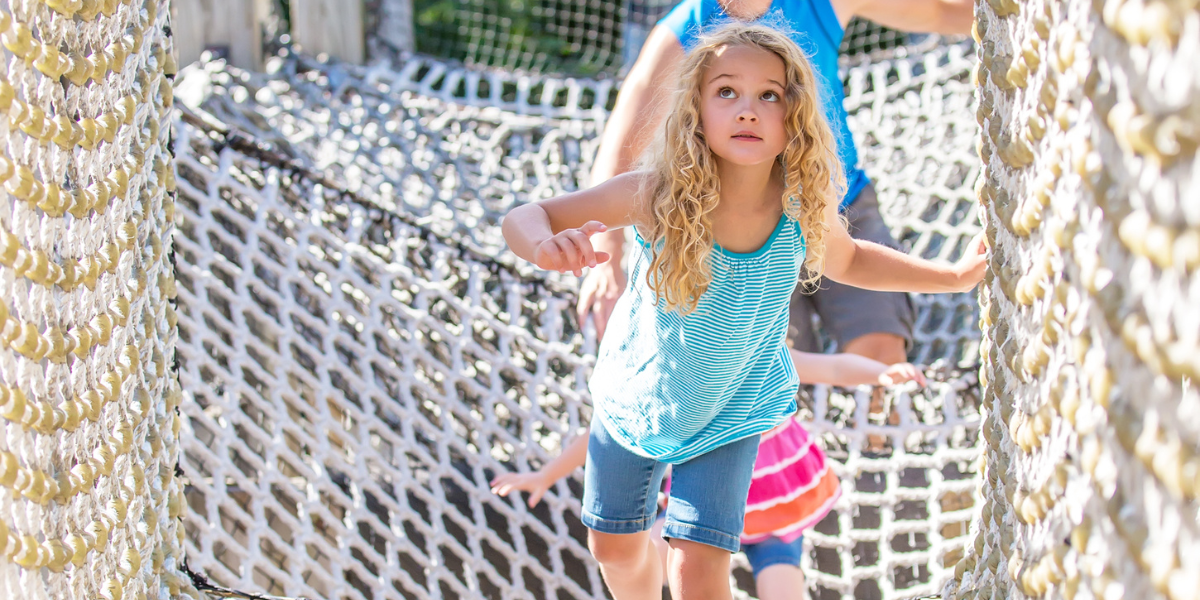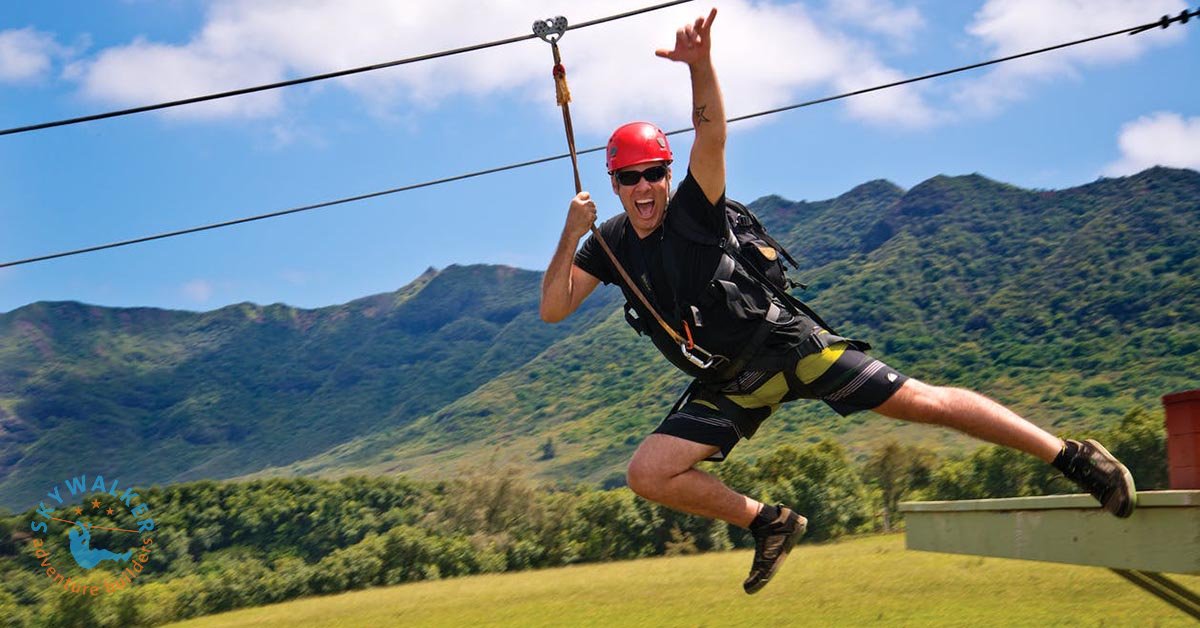Creating an adventure park is an exciting yet complex process that combines creativity, engineering, and guest experience design. Whether you're building a ropes course, zipline, or a full-scale adventure park, the goal is to craft a space that’s safe, engaging, and profitable.
What Is Adventure Park Design?
Adventure Park Design is the process of planning, engineering, and constructing outdoor recreation spaces like high ropes courses, ziplines, climbing walls, and more. It involves balancing safety standards with creative elements to deliver thrilling experiences for visitors of all ages.
From site selection to maintenance planning, every step of the design process impacts the success of your park. Let’s explore the key factors that go into creating a world-class adventure destination.
The Foundation of Great Adventure Parks
Every successful adventure park starts with a solid foundation built on three core principles: safety, accessibility, and fun.
Safety First
Safety is non-negotiable in adventure park design. Each element—whether it’s a zipline or a climbing wall—must meet strict industry standards for construction and operation. This includes using high-quality materials like durable cables, harnesses, and belay systems while conducting regular inspections.
Accessibility Matters
An inclusive design ensures that people of all abilities can enjoy your park. Features like adaptive harnesses or wheelchair-accessible elements expand your audience while enhancing your park’s reputation as a welcoming space.
Fun and Engagement
At its core, an adventure park should be fun! Incorporate diverse challenges that cater to different skill levels. From adrenaline-pumping ziplines to low ropes courses ideal for team-building activities, variety keeps guests coming back.

Steps to Designing an Adventure Park
Designing an adventure park involves several critical steps:
1. Site Selection
The location sets the stage for your park’s success. Choose a site that’s safe, accessible, and complements the type of activities you plan to offer. Factors like terrain, weather conditions, and proximity to other attractions are key considerations.
2. Feasibility Study
Before diving into construction, conduct a feasibility study to assess costs, market demand, and environmental impact. This ensures your vision aligns with financial realities.
3. Concept Development
Work with experienced designers to create a layout that balances aesthetics with functionality. This stage includes deciding on key features like high ropes courses, ziplines, or themed play areas.
4. Engineering & Permits
Collaborate with engineers to finalize technical details such as load capacities and structural stability. Secure all necessary permits from local authorities before construction begins.
5. Construction
Once plans are approved, construction begins using high-quality materials tailored to your design specifications. Ensure all installations comply with industry safety standards.
6. Staffing & Training
Hire skilled staff who are trained in operating equipment safely and managing guest experiences effectively.
7. Maintenance & Evaluation
Regular maintenance is essential for safety and longevity. Schedule routine inspections and gather guest feedback to continually improve your offerings.
Designing for Memorable Guest Experiences
An adventure park isn’t just about physical challenges—it’s about creating memories that last a lifetime. Here’s how you can elevate the guest experience:
Immersive Themes
Incorporate storytelling into your design by adding themed elements like jungle adventures or pirate quests. Immersive environments enhance engagement and set your park apart from competitors.
Tech Integration
Leverage technology like virtual reality (VR) or augmented reality (AR) to offer unique attractions that blend physical activity with digital interactivity.
Social Spaces
Create areas where guests can relax or socialize between activities—think picnic zones or observation decks with scenic views.
Types of Adventure Parks
Adventure parks come in many forms depending on their target audience and goals:
High Ropes Courses
These courses challenge participants with elevated obstacles that test balance and problem-solving skills.
Low Ropes Courses
Ideal for team-building exercises or younger participants, low ropes courses focus on collaboration rather than height-based challenges.
Ziplines & ZipCoasters
Ziplines offer pure adrenaline as guests soar through treetops or across open landscapes. For added excitement, ZipCoasters combine ziplining with roller-coaster-style twists and turns.
Climbing Walls
With varying difficulty levels, climbing walls appeal to both beginners and seasoned climbers looking for a challenge.

Sustainability in Adventure Park Design
Modern adventure parks must also prioritize environmental sustainability:
-
Use eco-friendly materials like sustainably sourced wood.
-
Minimize land disruption during construction.
-
Implement energy-efficient systems such as solar lighting.
-
Educate visitors on conservation efforts through interactive displays.
By reducing environmental impact, you not only protect natural resources but also appeal to eco-conscious visitors—a growing demographic in outdoor recreation.
Why Invest in Adventure Parks?
Adventure parks are more than just entertainment venues—they’re profitable investments with long-term potential:
-
High ROI: Attractions like ziplines have low maintenance costs but high visitor appeal.
-
Year-Round Appeal: Indoor components or weather-resistant designs keep parks operational throughout the year.
-
Diverse Revenue Streams: From ticket sales to merchandise and food services, there are multiple ways to generate income.
-
Community Impact: Parks often become local landmarks that boost tourism and economic growth in surrounding areas.
Partnering With Experts
Building an adventure park is no small feat—it requires expertise across multiple disciplines including engineering, design, marketing, and operations management.
Collaborating with experienced professionals ensures every detail is executed flawlessly while staying within budget and timeline constraints. From initial concept development to post-opening evaluations, expert guidance can transform your vision into reality.
Final Thoughts
Adventure Park Design is both an art and a science—a careful blend of creativity, engineering precision, and guest-focused planning. By prioritizing safety, accessibility, sustainability, and fun in every aspect of your design process, you can create a destination that captivates visitors while delivering lasting value.
Ready to bring your vision to life? Start planning your dream adventure park today!
Additional expert information on the Adventure Business
Interested to read more about the Adventure Business with our expert articles?
- Logistics and throughput in Adventure Parks, key elements in Customer satisfaction
- Profitable Upgrades for Aerial Adventure Parks
- Integrating Gaming Technology into Adventure Parks
- Optimizing Adventure Park Operations: The Power of Predictive Analytics
- The Benefits of Integrating Urban Adventure Play in Commercial Retail
- Creating Profitable Adventure Parks: Tips and Strategies
- Roller Coaster Zipline: The Thrilling and Profitable Amusement Solution
- Prioritizing Safety: The Key to Success in Aerial Adventure Parks
- Maximize Your Adventure Park's Potential with an Online Reservation System
- Importance of a Safety and Quality Management System at Adventure Parks
- Virtual Reality Training in Adventure Parks: Revolutionizing Skill Development and Safety
- Climbing to New Heights: Boosting Traffic and Revenue with an Indoor Ropes Course
- How to Launch a Zip Line Company
- Ride a bike modified to attach to a zipline cable
- Adopting Universal Design and Adaptive Techniques for Inclusive Adventure
- From Skills to Thrills: How to Start and Run a Successful Adventure Business
- Thinking of investing and operating a Zipline? We got you covered with this expert article!
- Rope Course Construction: A Comprehensive Guide
- Leisure and Adventure in Retail Real Estate: The Future of Shopping
- The Benefits of Netted Attractions for Operators and Guests
- Thrills Adventure for Family Entertainment Centers’













